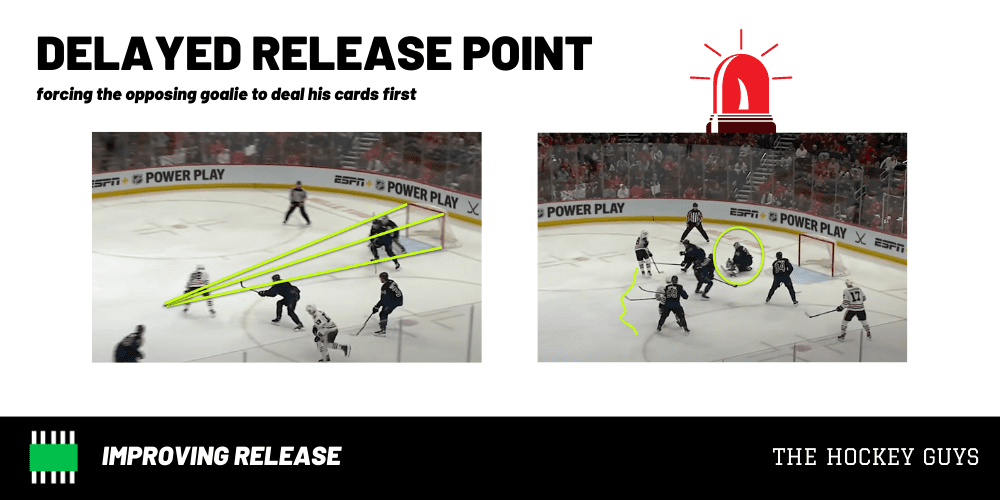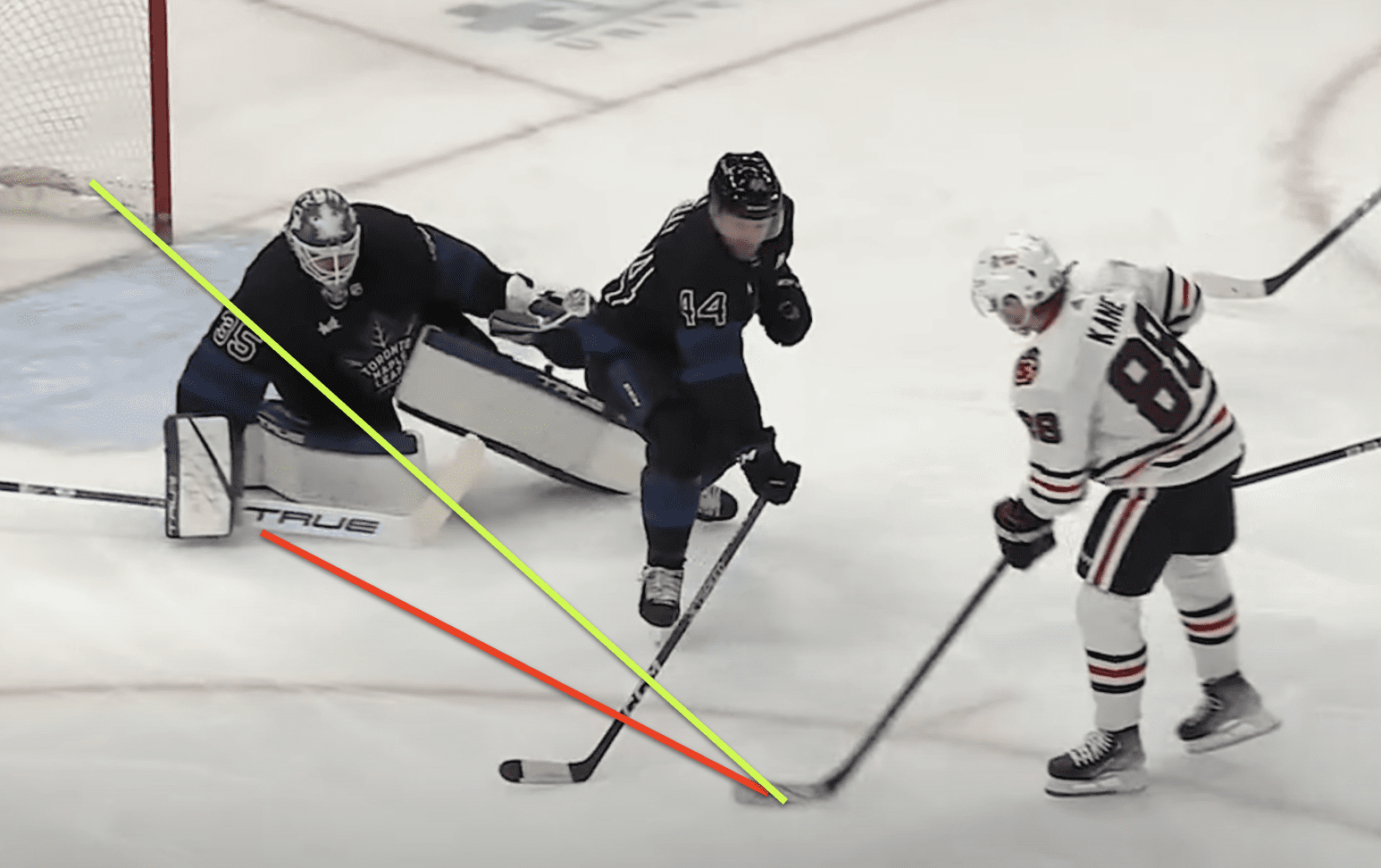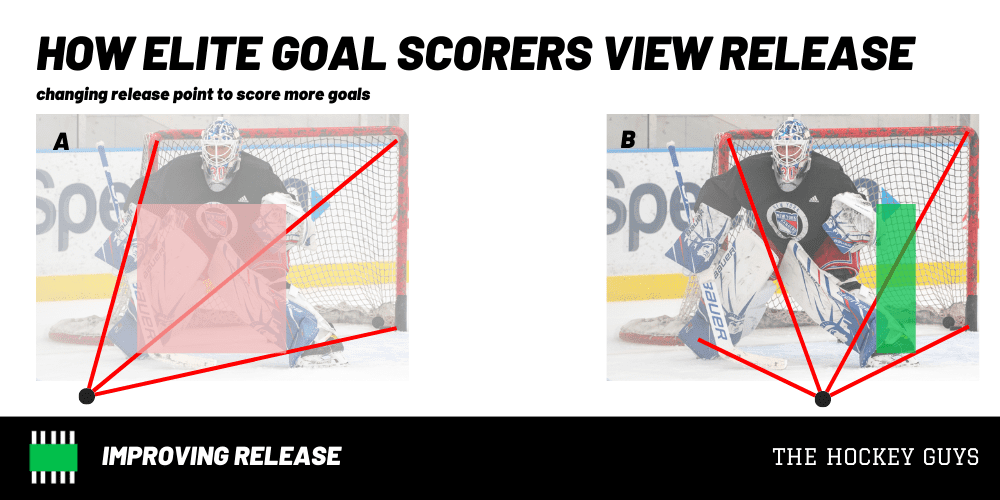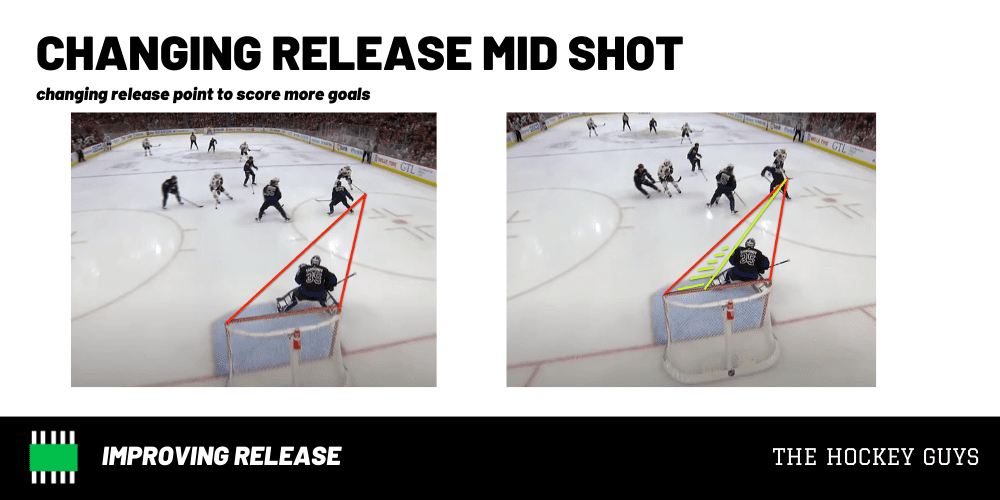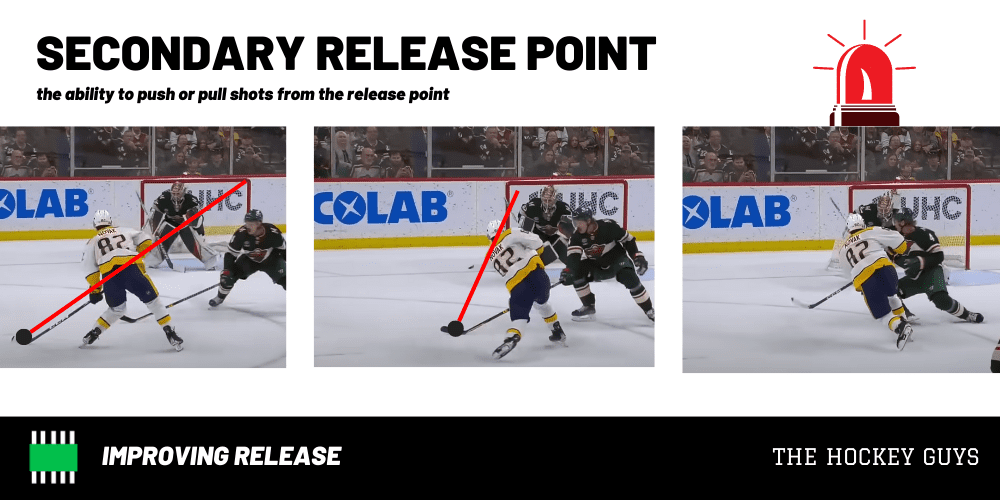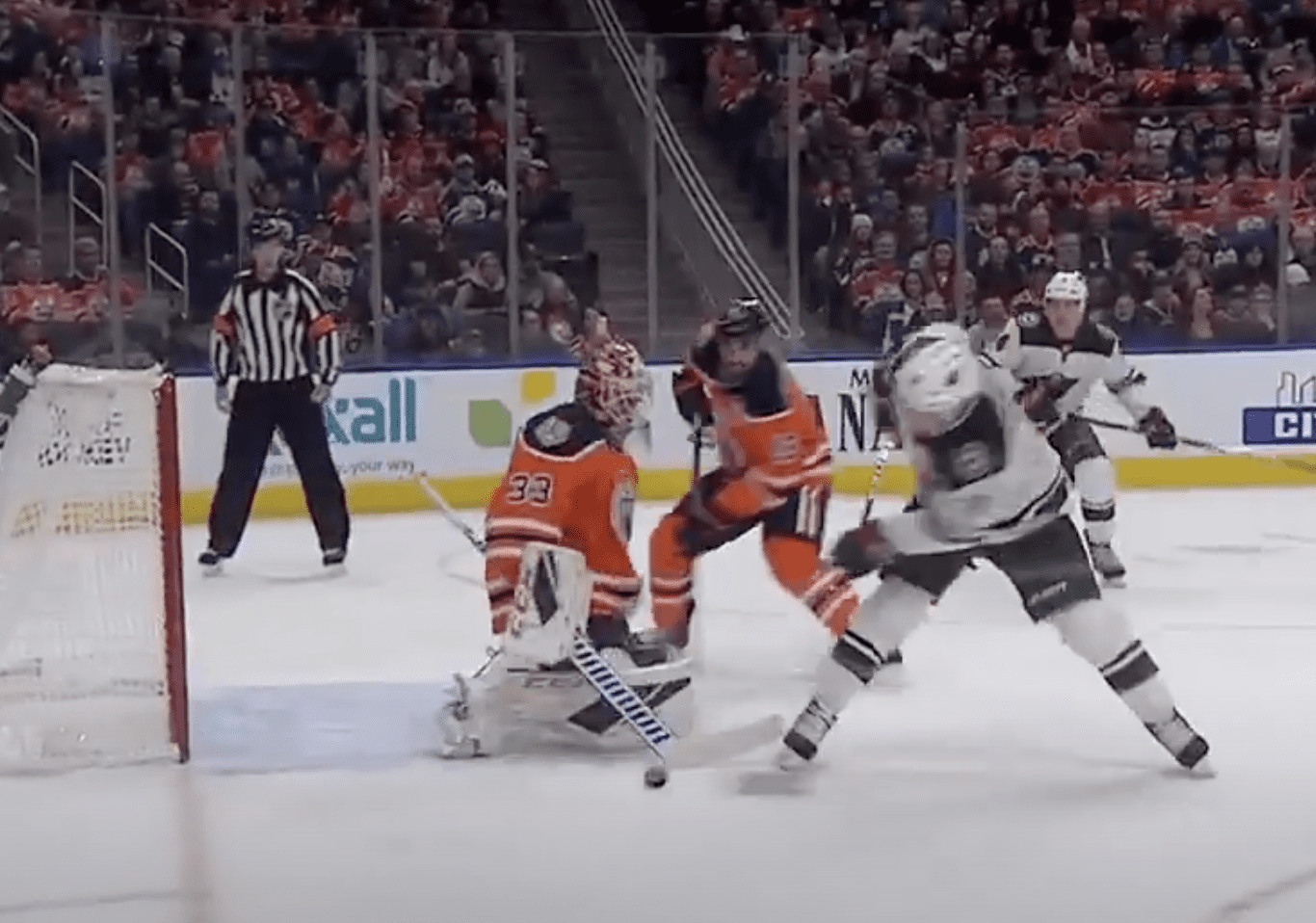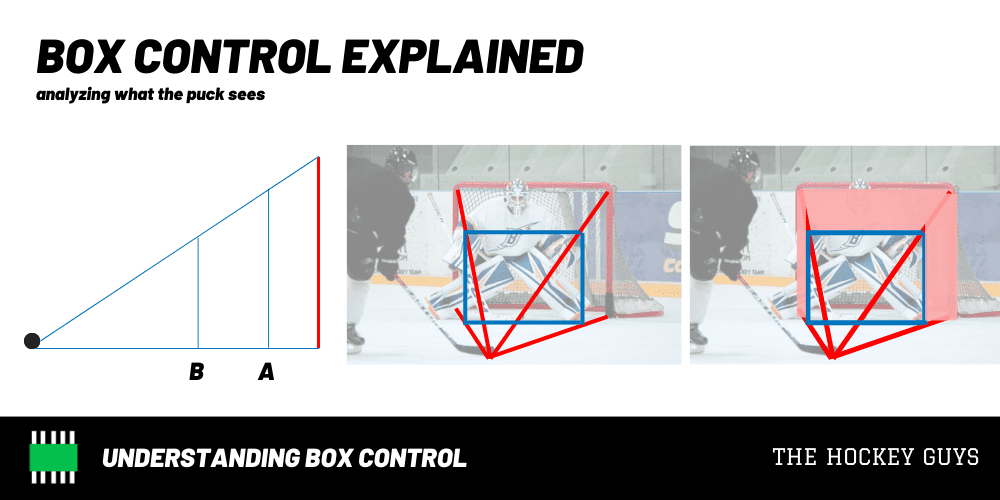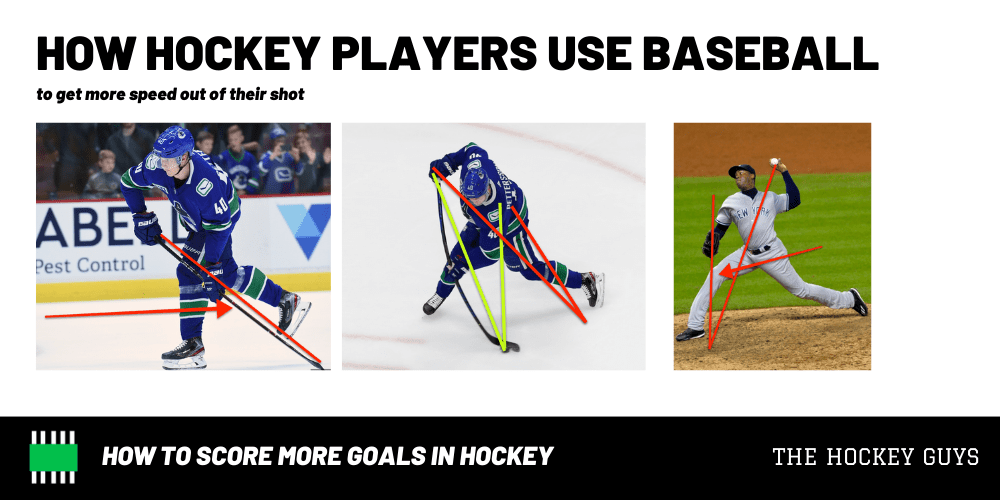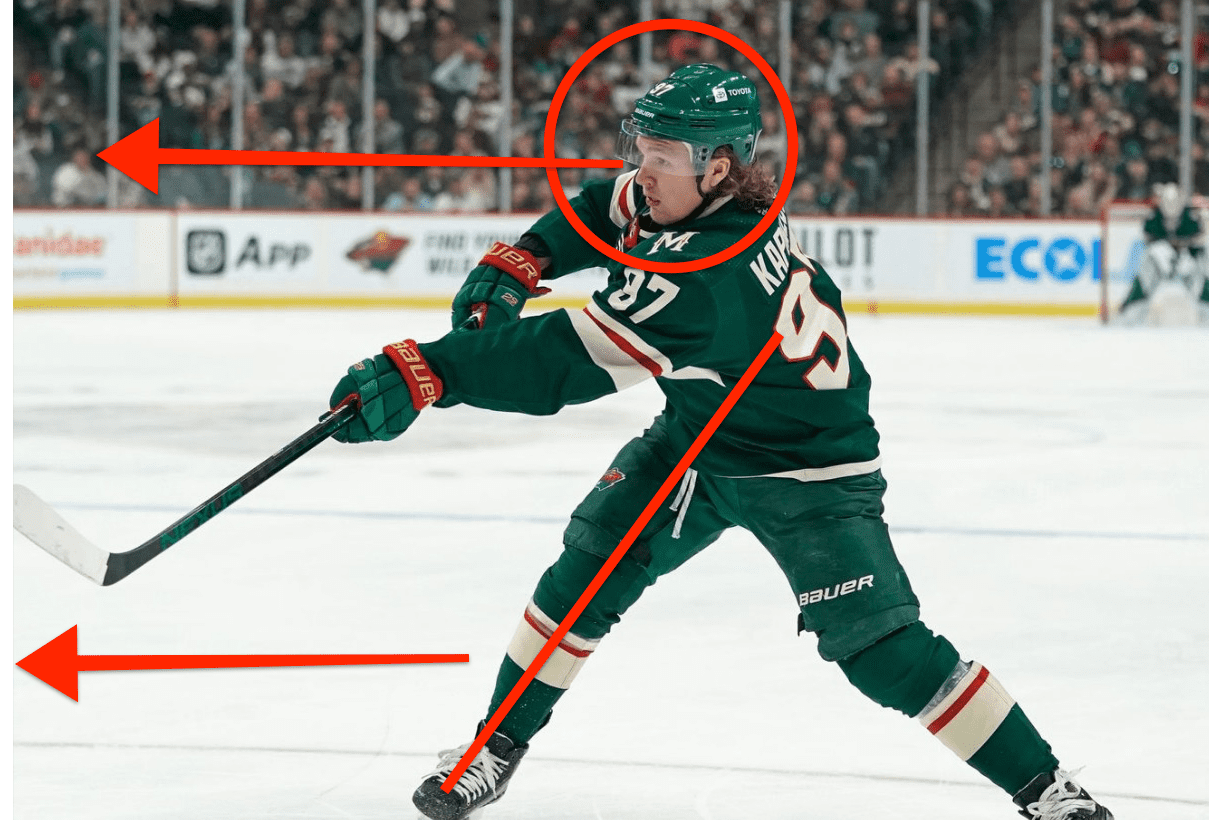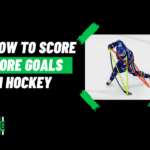Like most things in life, there is an art to it. Scoring more goals isn’t simply about being in the right place at the right time. In fact, sometimes, it’s not even about having the best shot on the ice.
Gone are the days of simply shooting 10,000 pucks every summer and returning to double your production the next season. For those who have already achieved some level of success, training at an advanced level beyond that of your peers is what is necessary to help you score more goals. Now with all that being said, if your only option is to shoot a high volume of pucks during the off season, do it.
But rest assured, the best NHL players are not stopping there, and you shouldn’t either.
Training Drills You Can Do To Score More In Hockey
The best NHL goal scorers do a number of things extremely well. They do the obvious, picking their corners, “sniping” if you will. Have an extremely quick release, a booming slap shot or a wicked wrist shot. Beyond that, they also know how to maximize opportunity for themselves, for their teammates, and how to score in situations all over the ice. It’s not simply enough to have a great shot.
If you’re serious about scoring more goals next season, these are the top things you should work on right now.
The biggest thing to consider is changing the shot release.
Improve Your Release
Improving your release as a hockey player is not simply learning to release the puck quicker. Actually, it’s three things.
- Quick release
- Delayed release
- Release point
Quick Release
If you want to score more goals next season, the most important release you can work on is a quick one. The element of surprise results in more goals during a hockey season than any other situation on the ice. This is why passing the puck across the slot area for a one timer works so well, as the goalie is trailing the play.
If a player has a slow release, it gives the goalie time to get set prior to the shot. A quick release will result in more goals because goalies have less time to be standing still for the shot.
Delayed Release
Mastering the art of delaying your release can and often will wreak havoc on the opposing goalies angles and squareness to the puck. Think of a delayed release as a two part sequence. A delayed release works well when you have time to do something other than immediately shooting the puck. Utilizing a delayed release during the middle of a slap shot isn’t the best time for it, as slap shots benefit from the art of speed rather than forcing the goalies hand.
When executing a delayed release shot in hockey, the entire point is for the goalie to take themselves out of position.
The delayed release is no better illustrated than in this goal by Patrick Kane.
When Kane initially catches the puck, he has the opportunity to shoot immediately. As we can see in the images below, had he done this, Toronto Maple Leafs goalie
The awareness to have patience demonstrated by Kane on this shot is something elite goal scorers possess, making situations like this end up in goals more often than not. I mean, look at this. As a result of simple patience on his delayed release, Kane has forced Leafs netminder Ilya Samsonov to his knees. Additionally, Kane chooses to have Samsonov beat himself by moving his stick out of the five hole position.
Drills For Delayed Release
One of the most simple drills a player can do to improved their delayed release shooting is by starting to take a simple wrist shot.
The player should pull the puck towards their body and without stopping the puck, slow it down slightly. From this point, the player should work on shooting to either side of the net.
One mistake we see often at younger levels is pulling the puck towards the body, releasing it into the same spot every time. If you want to score more on the ice, learn to change where you shoot that puck during the middle of your release. Pausing for even a half second can mean the difference in a standing goalie, or one who goes to his knees.
Release Point
Changing the release point of the puck is one of the single most effective things hockey players can do to score more goals. If you learn what the puck actually sees, simply shifting it 6-12″ prior to taking a shot, the puck may very well be staring at wide open net behind it.
In the photo below, let’s look at how changing the release point can increase scoring opportunity without moving the shooters body position.
As we can see in Image A on the left hand side, legendary goaltender Henrik Lundqvist is positioned perfectly to make the save. Shooting from this release point is unlikely to result in a goal. However, as we can see in Image B on the right side, if we move the puck slightly before shooting, there is an open space of net on the glove hand side.
Patrick Kane Understands Release Point And Screen For Easy Goal
Let’s take a real life look at one of the games best all time goal scorers, Patrick Kane. In this clip, Kane enters the zone and simply shoots the puck through a defender for what looks like an easy goal. Or was it?
As we see in the video, Kane shifts his release point ever so slightly closer to his body before releasing his shot. In this scenario, this accomplishes two things. First, his release point is completely different and the goalie must adjust to this shot as it’s happening. As a goalie, this is an incredibly hard thing to do. Second, Kane has now interuppted the goalies sight line to the puck by using one of the Toronto Maple Leafs defenders as a natural screen.
This is demonstrated in the image below.
But wait, what if the goalie has already predicted that Kane would do this? Elite goalies study opposing players. A player like Patrick Kane, who will inevitably see multiple scoring opportunities every single game, is somebody who opposing goalies study. They’re searching for any possible “tic” that a player may have, which would give away their next move. Of course, in the heat of the game, it is far easier said than done.
In this case, there are levels to this. Kane knows that when he pulls that puck in towards his body, he is still in complete control on whether he shoots it glove or blocker side. This is what is referred to as the “Secondary Release Point”.
Let’s take a look at a video and analysis of Secondary Release Point adjustment during the middle of a shot.
In the video above, Predators forward Tommy Novak does a few things notably well, but for the sake of this breakdown we’re going to take a closer look at his release point adjustment during the middle of his shot.
As we can see from the images above, Novak begins to pull the puck towards his body, forcing the goalie to pull towards his glove side. During the middle of the release, Novak pushes the puck back over the goalies blocker side.
As a result of his elite ability to adjust the release point of his shot as he is in the act of actually shooting it, Novak scores.
Shoot Off Balance
Learning to shoot off balance goes hand in hand with a quick release point. One of the games all time greats at shooting off balance is Zach Parise. Parise is the leading Minnesota born all time goal scorer in Minnesota. He built his career on learning to capitalize on loose pucks within 5-10′ of the net.
Take a look at the image below. Does this look like the ideal way in which to shoot the puck? Absolutely not. However, due to his innate ability to shoot the puck from an off balanced position, Parise scores in this situation.
Let’s take a look at the video. Parise shoots this puck from an incredibly awkward position, which results in a goal.
Learning to shoot off balance is something that is incredibly important for goal scorers at any level. Think of it this way. If you have to have the puck in a perfect position for you to get the most out of your shot, you’re sacrificing things like poor positioning from the goalie, the element of surprise, and time. When a loose puck presents itself in front of the net, you must have the ability to immediately shoot the puck at the net.
This is done through repetition and forcing yourself to shoot pucks from a variety of positions within a close radius to the players body. When you’re working on shooting pucks, do not simply shoot 1,000 pucks from the same position! Learn to change the position, which will improve your shot release and ability to shoot the puck off balance.
Off Balance Puck Shooting Drills
One of my favorite off balance shooting drills for players is done simply while standing on one leg. The next time you head out to the garage to shoot pucks, do 50-100 shots while standing on one leg. Once you’ve completed this, switch to the other leg.
Similar: How To Become a Better Overall Player
Study Goaltending
When we say study goaltending, we do not simply mean study your opposing goalies. At the youth level, this is simply impossible due to the lack of video footage on opposing net minders.
What we mean is, learn to avoid easy saves for an opposing goalie. If you’re skating into the zone, a long shot at the glove or blocker of an opposing goalie is highly unlikely to result in a goal. What could result in a goal, however, is holding the puck for three additional seconds as you close in on the net. What could result in a goal is in shooting the puck at the goalies feet, forcing a rebound.
For the goal scorers reading this, goalies love it when you shoot at their glove and blocker. These are some of the easiest saves a goalie has the opportunity to make! Think about it. If you’re throwing a baseball at your friend who is wearing a glove, is it easier for them to catch the ball near their head? Or is it easier to catch the ball when it is thrown at their feet?
Learning to study the game is immensely important if you’re wanting to put more pucks in the net throughout your career. You must learn to maximize any opportunity you get with the puck and the easiest way to do this is to study natural scoring opportunities created by goalies themselves.
Understand Box Control From A Goalies Perspective
Wait, wasn’t this supposed to be a goal scoring guide for hockey players? So what are we doing talking about goalies?
To help explain what the puck sees, do you ever remember a situation where you’re watching a game on TV and a player misses what appears to be a wide open net? Or the goalie makes a little shoulder movement to make what looks like a golden scoring opportunity look routine?
From a goalies perspective, this is called “Box Control“. For a player shooting the puck, it is simply understanding what the puck does and does not see. Taking a look at the graphic below, we see point A and point B. For goalies, this is called “cutting down the angle”.
As we look at the middle photo below, it appears that the top of the net is wide open for an easy goal. However, due to “box control”, or the pucks view of the net, the top portion of the net is completely invisible from the pucks position on the ice.
The video below shows Box Control being taught by Justin Goldman for Goalie Coaches.
So with that in mind, how can we improve our scoring opportunities if the opposing goalie has great positioning and is always on their angle?
Maximize Shot Power
Maximizing your shot power comes in a few different forms, but one of the biggest mistakes we see young shooters make is by focusing their release on the wrong leg! Let’s go back to the baseball analogy from above.
When a left handed pitcher throws the ball, which leg do they finish their throw on? That’s right, their right leg. This is simple momentum! The same is true in hockey.
During the 2022-23 NHL All Star Game, Elias Petterson won the hardest shot competition with a recorded shot speed of 103.2 MPH. The all time NHL hardest shot record is held by Zdeno Chara, who happens to be 7 inches taller than Petterson at 6’9″. Despite being 7 inches shorter than Chara, Petterson still managed to clock in just 5 MPH less than Chara’s hardest shot of 108.8 MPH.
A huge part of this is transferring energy from the rear of the body, to the front. As a result of this, the player can maximize their shot power. Let’s look at a graphic that demonstrates how to get more speed out of your shot, by using the same mechanics as a baseball pitcher.
How Hockey Players Can Learn To Shoot In Stride
Shooting in stride is one of the hardest things to do for many hockey players. Mastering the ability to shoot in stride will deliver more power to your shot due to simple physics. For a right handed shot, if you pull up and shoot from your right leg, you’re shooting in “glide”. From this position, you are gliding, no longer generating forward power.
If you push forward with your right leg, shooting as you push, finishing as a baseball pitcher would, on your left leg, you are now shooting in stride. This is how maximum shot velocity and speed is produced.
Maximum Shot Power
- Right Handed Players: finish weight transfer on left leg
- Left Handed Players: finish weight transfer on right leg
Reduced Shot Power
- Right Handed Players: shoot from right leg
- Left Handed Players: shoot from left leg
Of course, to score more goals, we must learn to shoot the puck effectively from both legs.
Keep Your Head Up While Shooting
Very rarely at the NHL level do we see players shooting the puck with their eyes looking at the puck. Not only does looking at the puck increase the opportunity that it may be stolen from you, it’s very hard to see where you’re going to shoot it when you cannot see where it’s going!
Look at this image of Minnesota Wild superstar Kirill Kaprizov shooting the puck during an NHL game. Kaprizov is looking exactly where he wants the puck to go. This is why we have the term “Hand Eye Coordination”.
If you plan on scoring more goals next season, you must learn to shoot the puck while looking at your target. One of the easiest ways to improve this skill is to start stick handling the puck without looking at it. By doing stick handling drills where you are not looking at the puck, you will dramatically improve your ability to feel the puck on your stick and as a result, be able to shoot while looking at your target better.
Identify Low Opportunity Shots
The final piece of advice we have on how to score more goals as a hockey player is something that has nothing to do with shooting the puck at all. This is, rather, increasing opportunity by not shooting.
How many times have you watched a hockey game where one team starts the opposing teams breakout by taking a low percentage shot that misses high and wide, hits the glass, and rings around the boards?
Elite goal scorers simply do not take low percentage, low opportunity shots. This is pretty simple. By studying the game, by learning when to shoot and when not to shoot, you will increase your offensive zone time and the amount of opportunities you have to score.
Improving Your Game
Getting better at hockey is a process, but through hard work, determination, and learning how to become a better player overall you will start to see improvement in your goal scoring abilities!

